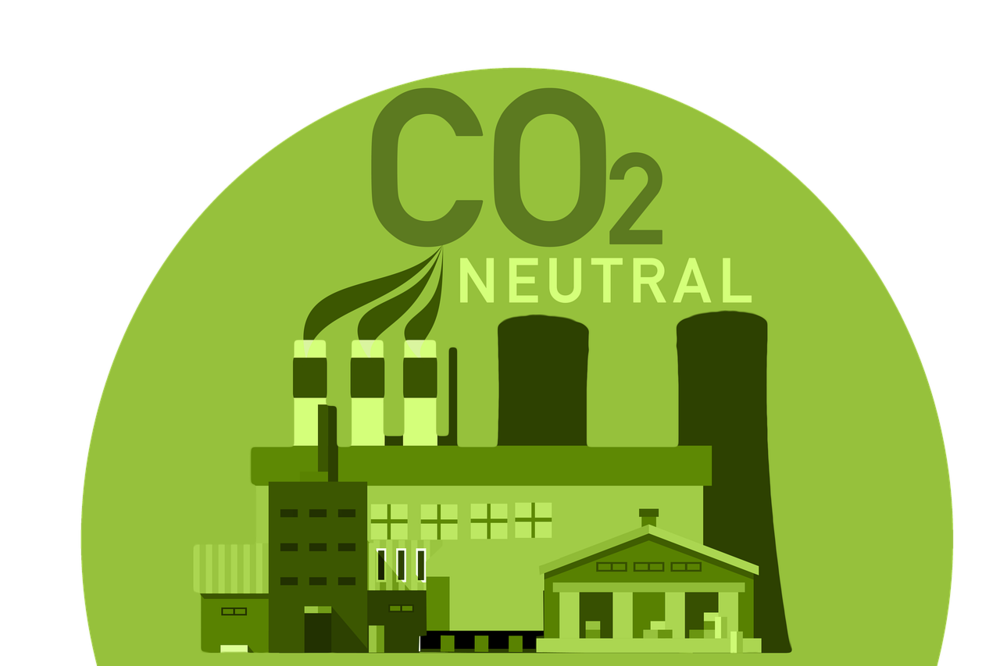This article is part of a blog series on construction 4.0 embracing digitalization, urbanization of emerging economies, and the changes it implies for the construction industry._
Global energy-related CO2 emissions grew by 1.1% in 2023, increasing 410 million tonnes (Mt) to reach a new record high of 37.4 billion tonnes (Gt). This compares with an increase of 490 Mt in 2022 (1.3%). Emissions from coal accounted for more than 65% of the increase in 2023.
At a COP26 summit, attended by the countries that signed the United Nations Framework Convention on Climate Change (UNFCCC) in 1994, the urgent need to reduce greenhouse gas emissions by 80% to reach the ambitious goal of limiting global warming to 1.5°C.
Construction companies have to change their mindset about sustainability if they want to:

Using green building techniques like renewable energy and recycled materials can improve sustainability. For example, to reach net zero by 2050, the construction industry should push companies and governments to:
Here are some initiatives governments have implemented to motivate companies in the industry to reduce their greenhouse gas emissions.
The strategy is to double the annual energy renovation rates of European Union (EU) buildings in the next 10 years. To achieve their goals, they have:
In the $2 trillion Build Back Better spending framework announced in 2021, $555 billion has been appropriated for clean energy investments. The framework to encourage companies and consumers to go green offers:

The whole construction value chain should consider where to reduce CO2 emissions throughout the construction process and operations of the builds. Here are some ideas on how it could be done.
Finding new materials and products like wood composites, to improve or substitute for conventional materials and products such as steel and concrete. Wood composites:
Wood is sustainable as it can be regrown and reduces CO2 emissions by 15% to 30%.
To decrease carbon emissions during the design and planning phase, architects and planners look for:
During the construction and in-use phases:
According to an EY analysis, 70% to 80% of unused construction materials are wasted. Reusing or recycling the waste the contractors would significantly reduce the amount ending in landfill.
For example, damaged timber could be reused for wood flooring material, substantially reducing CO2 through circular material models. A recycling center in Retznei, Austria processes 130,000 tons of construction and demolition waste materials annually, of which 70% are recycled or reused, while 30% are used as back-filling material for a quarry.
Companies in the construction industry can form partnerships, legal or informal, allowing them to accelerate emission reductions, within the organization and across the ecosystem to:
These partnerships could create great opportunities for these companies to:

Using technology helps construction companies to be more sustainable and profitable by making it easier to choose green materials and use less energy. Risk must be evaluated before implementing new technologies. Below are some examples:
Sichuan Province, a southwestern Chinese province, wanted to develop the Chengdu-Yibin Expressway a smart construction initiative that aimed to be:
The brief to the Sichuan Road and Bridge (SRB) company that was awarded the engineering, procurement, and construction contract was as follows:
The planning process was difficult due to:
Using BIM methodology and reality modeling, SRB were able to:
Offsite Construction and BIM has many benefits, including:
Nick Milestone, Operations Director at Sigmat claims they have embedded Sig-Dek, their own decking profile product, into the Tekla BIM library. He said:
Having access to this product further enhances accuracy. Achieving this level of accuracy in virtual design and construction (VDC) processes, allows Sigmat to achieve zero waste with offsite construction. Additionally, the correct material quantities are always ordered thanks to automatic quantity take-offs, and no rework is required due to detailing or fabrication errors.
Achievements:

Combining automation and technologies like robotics, smart building materials, the Internet of Things (IoT) for data collection, and artificial intelligence for analysis, you can:
For instance, using predictive analytics tools you will be able to:

Implementing sustainable technologies presents challenges:
How could you overcome these challenges?
The long-term savings will deliver a high return on investment by:
Automation and robotics require different skills that can be acquired by:
Artificial intelligence developments bring technological solutions to the construction industry with the potential to improve worksite efficiency, data quality, and overall innovation that carries legal risks that must be investigated, evaluated, and addressed before implementing these solutions.

Investing in sustainable technologies can result in long-term cost savings, such as improved insulation and windows, or using renewable energy sources like solar panels and wind turbines to generate power. These can help businesses significantly reduce their energy bills and reliance on traditional utilities.
You can partner with universities to innovate in products and services to help your clients, building owners, and operators, to:
Innovations can involve energy-efficient systems like heating, ventilation, and air conditioning (HVAC), lighting, plumbing, and building envelope (walls, windows, roofs, and insulation).
For example offering products and services at each stage of the design, construction, operation, and demolition in various areas from insulation to entire building management systems.
Automation and system integration using cloud platforms and business model innovations combined with holistic services and solutions will improve a building’s operational performance and enhance the comfort of the users.
A certification to prove, energy conservation awareness of the construction. For example, LEED certification is available for both new building construction as well as existing buildings and spaces.
Automated bulldozers and excavators or robotic arms for construction projects, can reduce fuel consumption and lower emissions, reducing carbon footprint over time.
Renewable energy sources like solar power for lighting and machinery can decrease reliance on fossil fuels.
These initiatives could help you to:

Introducing automation and digitalization in your company can improve:
By using technologies such as:
Technology in the construction industry helps to build a better tomorrow, strengthening efficiency and safety.
To speed up project completion and improve quality control measures you should be using:
Achieving net zero by 2050 will give you a significant competitive advantage. Do not wait to develop strategies and business models that will get your clients one step closer to achieving that ambitious goal.
All you have to do is to make the wise decision to invest in technology to:
Driving Vision's technology appraisal looks at the best way to insert new technology in your workflows and how to move your organization to cloud computing so you can open up new possibilities for your daily planning tasks and make sure your data never leaves the optimally secured data center.
A Driving Vision expert will conduct the interviews online, issue a report, and discuss our findings with you. Together we can decide the best way to implement the solutions at your pace and according to your budget.
Implementing BIM can be daunting, but Driving Vision is here to help you at the pace you are comfortable with. Get started by getting in touch now
You minimise the level of investment required to implement BIM as we share the Research and Development costs with other client
You increase your revenue by staying ahead of the competition as BIM best practices allows you to win bigger and more rewarding projects.
You reduce your costs, more than our fees cost you, by decreasing potential litigations, rework, and errors and omissions
